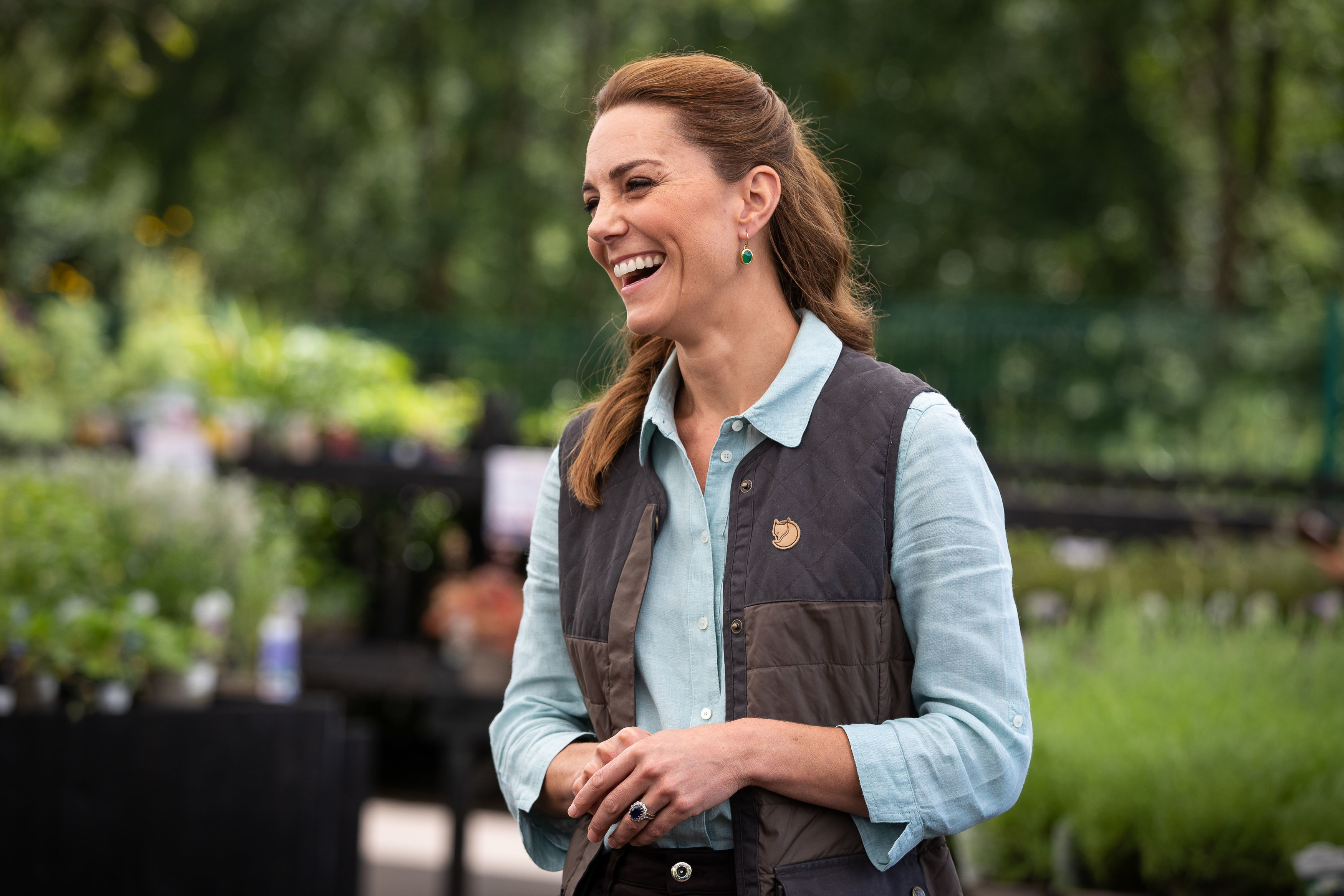Celebrity fashion is ever-evolving, and nothing captures the public’s imagination quite like a dramatic hair transformation. A daring dye job or a bold new cut can make headlines and get people talking everywhere.
In this feature, we uncover the stories of eight celebrities who abandoned their signature hair colors. These captivating makeovers elicited reactions from fans and we have their before and after photos.
Cate Blanchett attends the annual Oscar nominees luncheon on March 8, 1999 | Source: Getty Images
Eight Celebrities Who Dared to Step Out of Their Comfort Zones
Dakota Johnson: The “Fifty Shades of Grey” star made headlines when she swapped her brunette tresses for a lighter look in 2014.
Cate Blanchett: The Australian actress is unafraid of change. She made a splash with her switch to a dark hair color, proving her adaptability as an actress and a fashion-forward individual.
Cate Blanchett and Dakota Johnson | Source: Getty Images
Cameron Diaz: Known for her blonde locks, Diaz shocked everyone when she debuted a dark hairdo in 2006. The change was as bold as it was unexpected.
Margot Robbie: The “Wolf of Wall Street” actress demonstrated her flair for reinvention with a bold hairstyle change. She made a statement that further cemented her reputation for a daring fashion sense.
Blake Lively: Famous for her sunny blonde locks, Lively created a stir when she debuted a major change in her look.
Blake Lively and Margot Robbie | Source: Getty Images
Anne Hathaway: The “Princess Diaries” star is known for her brunette hair. However, she made headlines with a notable hairstyle change that awed fans.
Paris Hilton: The blonde-haired socialite is a trendsetter in her own right. She has experimented with various styles but her notable hair transformations always steal the show.
Cher: The iconic singer and actress, known for her dark hair, stunned fans when she transformed into a blonde.
Paris Hilton and Anne Hathaway | Source: Getty Images
Cameron Diaz
Born on August 30, 1972, Cameron Diaz quickly became a Hollywood favorite in her early 20s. She made her mark starring in hits like “The Mask,” “There’s Something About Mary,” and “Charlie’s Angels.”
Cameron Diaz in 1996 | Source: Getty Images
Her bright blonde hair and lively personality have always been a part of her signature look. However, Diaz stepped back from acting in 2014 to focus on her personal life. Though she left Hollywood, she still faces public scrutiny over her appearance.
Cameron Diaz attends “Guys Choice 2014” on June 7, 2014 in Culver City, California | Source: Getty Images
Now in her 50s, she has been open about her journey with aging. She is embracing her natural self over societal expectations. In a candid reflection on vanity and self-acceptance, she discussed the liberating yet challenging process of stepping away from the constant scrutiny.
Cameron Diaz during an interview on October 25, 2023 | Source: Getty Images
In 2006, Diaz surprised her fans when she appeared on Jay Leno’s “The Tonight Show.” She was sporting dark brown hair instead of her signature blonde. Subsequently, she attended more public events sporting her dark hairstyle, drawing significant attention.
Cameron Diaz during an interview on November 27, 2006 | Source: Getty Images
The reaction was overwhelmingly positive. Fans and critics voiced their approval on social media and various entertainment platforms.
Cameron Diaz seen on September 19, 2006 | Source: Getty Images
“Cameron Diaz looks so hot with dark hair,” one fan exclaimed. Another added, “Cameron Diaz with dark hair is perfect.” A third comment highlighted a broader sentiment, “Proof that brunettes are better. Cameron Diaz with dark hair. [sic]”
Cameron Diaz attends the world premiere of “The Holiday” on November 29, 2006 in New York City | Source: Getty Images
Diaz’s embrace of her dark hair was a celebratory moment in her career, symbolizing a deeper acceptance of self. Similarly, Dakota Johnson also surprised everyone by going from her classic brunette to a dazzling blonde. This change turned heads and sparked discussions on beauty standards.
Cameron Diaz during “The Holiday” press conference on November 19, 2006 in Beverly Hills, California | Source: Getty Images
Dakota Johnson
Johnson was born on October 4, 1989, to a lineage of actors and entered the spotlight early. In 1999, she debuted in “Crazy in Alabama” alongside her mother and half-sister. Johnson’s career has spanned various roles with notable performances in the “Fifty Shades” trilogy and “The Social Anatomy.”
Dakota Johnson during Variety’s Entertainment Marketing Summit on May 24, 2022 in Hollywood, California | Source: Getty Images
She is open about her views on the brutal realities of ageism and beauty standards in Hollywood. Her strong opinions reflect her commitment to authenticity in her personal and professional life. She once expressed, “In my real life, I don’t look pretty all the time. Nobody does.”
Dakota Johnson during the red carpet for the film “Madame Web” on February 13, 2024 in Mexico City | Source: Getty Images
Despite being naturally blonde, Johnson is recognized for her dark brown hair. In September 2014, she returned to her blonde roots during London Fashion Week. The transformation was a bold statement that captivated attendees and fans alike.
Dakota Johnson during London Fashion Week on September 14, 2014 in London, England | Source: Getty Images
There were mixed reactions to Johnson’s blonde hair. In 2017, one fan praised her appearance, “Dakota Johnson looks so much better with blonde hair.”
Dakota Johnson attends the “Don Jon” New York premiere on September 12, 2013 in New York City | Source: Getty Images
Yet, nostalgia for her blonde look resonated with fans years later. Another fan remarked in 2022, “I miss seeing Dakota Johnson with blonde hair.”
Dakota Johnson attends the 2013 TCA Winter Press Tour on January 8, 2013 in Pasadena, California | Source: Getty Images
However, some fans were taken aback by her earlier appearances with this hair color, as evidenced by a 2020 comment, “Dakota Johnson in ’21 Jump Street’ with blonde hair & no bangs……….. honestly a weird sight I forgot about. [sic]”
Dakota Johnson attends the “21 Jump Street” premiere on March 13, 2012 in Hollywood, California | Source: Getty Images
From Johnson’s exploration of identity through hair color, we turn to Cate Blanchett. Her style shifts have equally contributed to the ongoing conversation about celebrity image and personal evolution.
Cate Blanchett attends the Louis Vuitton Womenswear Fall/Winter 2024-2025 show on March 5, 2024 in Paris, France | Source: Getty Images
Cate Blanchett
Blanchett, born in Melbourne on May 14, 1969, has shone in theater, television, and movies. Her 1999 standout role in “Elizabeth” led to memorable parts in “The Curious Case of Benjamin Button,” “Blue Jasmine,” and “Carol.”
Cate Blanchett attends the 1999 Vanity Fair Oscar Party on March 21, 1999 in West Hollywood, California | Source: Getty Images
In 2017, Blanchett spoke about aging, stressing the beauty of change and self-acceptance. She believes true beauty is about looking outward and engaging with the world, not self-criticism.
Cate Blanchett during an interview on May 24, 2017 | Source: Getty Images
Known primarily as one of film’s most iconic blondes, Blanchett debuted her brunette hair at the 2019 BAFTAs. She presented an award, showcasing her new dark-haired look. This was a sharp contrast to her traditional blonde appearance.
The response to Blanchett’s transformation was positive, with fans and media celebrating her new look. Comments from fans over the years have shown a strong admiration for her daring choice.
Cate Blanchett attends the EE British Academy Film Awards on February 10, 2019 in London, England | Source: Getty Images
In 2018, a fan remarked, “Cate Blanchett with dark hair is so powerful that it becomes a threat that’s why she keeps it blonde instead.” Another expressed, “Cate Blanchett with dark hair has an effect on me.” By 2023, the sentiment remained strong, as one fan declared, “Cate Blanchett with dark hair. Supremacy. [sic]”
Cate Blanchett attends the “Up Next Gala” on March 5, 2019 in London, England | Source: Getty Images
As we move from Blanchett’s embrace of transformation, we encounter Margot Robbie. Her hair journey reflects a similar boldness in exploring different facets of her artistic expression.
Margot Robbie attends the 10th Annual Breakthrough Prize Ceremony on April 13, 2024 in Los Angeles, California | Source: Getty Images
Margot Robbie
Born on July 2, 1990, Robbie first gained recognition in “Neighbours,” an Australian soap opera. Her Hollywood breakthrough came with “About Time,” followed by standout roles in “Suicide Squad,” “Birds of Prey,” and “The Wolf of Wall Street.” Her ability to dive into various characters demonstrates her talent.
Margot Robbie attends the “The Wolf of Wall Street” premiere on September 1, 2014 in London, England | Source: Getty Images
In 2014, Robbie surprised her fans by trading her signature blonde locks for dark brown hair for her role in “Z for Zachariah.” She revealed her dramatic transformation at the Oscars in March of that year.
Margot Robbie attends the 86th Annual Academy Awards on March 2, 2014 in Hollywood, California | Source: Getty Images
The public reaction to Robbie’s brunette hair was mixed. Some fans expressed a slight dissonance with her new look, as one commented, “She still looks beautiful but this just feels… off.”
Margot Robbie hosts the Carmella Dinner on March 20, 2014 in Hollywood, California | Source: Getty Images
Another fan echoed this sentiment, saying, “It’s still Margot Robbie, but I agree with the point you’re making, it doesn’t seem to suit her very well, at least not this dark.”
Margot Robbie attends the Jameson Empire Film Awards on March 30, 2014 in London, England | Source: Getty Images
However, others were more enthusiastic, with one fan saying they were “obsessed with her brunette.” “Honestly, the brown suits her much better (but she’s beautiful no matter what),” another fan echoed.
Margot Robbie attends a dinner to celebrate the work of The Royal Marsden on May 13, 2014 in Windsor, England | Source: Getty Images
Similarly, Blake Lively has experimented with her look. When she made a major change, she stirred excitement and conversation among her audience.
Blake Lively is seen on May 2, 2024 in New York City | Source: Getty Images
Blake Lively
Lively, now 36, began acting at a young age, following in her family’s footsteps. Her first role was in “Sandman,” a 1998 film directed by her father.
Blake Lively, circa 1998 | Source: Getty Images
She gained fame with “The Sisterhood of the Traveling Pants.” However, she became a household name as Serena van der Woodsen in “Gossip Girl.” Lively’s talents extend to fashion and design. She’s known for styling herself and engaging in creative projects.
Blake Lively as seen on the set of “Gossip Girl” on October 1, 2012 in New York City | Source: Getty Images
Recognized for her signature blonde hair, Lively has played with various shades over the years. In 2015, she tried “bronde,” a mix of blonde and brunette.
Blake Lively attends “L’Ombre D’Emilie – A Simple Favor” premiere on September 18, 2018 in Paris, France | Source: Getty Images
In early 2023, she posted a selfie with auburn hair, sparking curiosity. By May, she revealed a bold red color for her new film role, “It Ends with Us,” confirming her love for transformation.
Blake Lively on the set of “It Ends With Us” on May 18, 2023 in Hoboken, New Jersey | Source: Getty Images
This was not the first time Lively had opted for red hair. In 2011, she attended the TIME 100 gala in this shade. Lively’s hair changes always get her fans and the fashion world talking.
Blake Lively at the TIME 100 gala on April 26, 2011, in New York. | Source: Getty Images
Each new look elicits excitement and speculation, from subtle tweaks to complete color changes. The varied reactions, from praise to curiosity, illustrate her impact on beauty trends.
Blake Lively on the set of “It Ends With Us” on January 12, 2024 in Jersey City, New York | Source: Getty Images
In a comparable vein, Anne Hathaway has also embraced significant changes in hair color. She aligns her looks with her roles and personal philosophy on aging and beauty.
Anne Hathaway attends “The Idea Of You” New York premiere on April 29, 2024 in New York City | Source: Getty Images
Anne Hathaway
Born in New York on November 12, 1982, Hathaway grew up in an artistic family. She’s known for roles in “Les Miserables,” “The Dark Knight Rises,” “Rachel Getting Married,” and “Love & Other Drugs.”
Anne Hathaway on May 20, 1999 | Source: Getty Images
At 41, Hathaway views aging as a part of life. She is rejecting the usual pressures from Hollywood and society. The actress believes aging is living, offering a fresh take on beauty and self-image. “To me, aging is another word for living,” she famously stated during an interview.
Anne Hathaway at “Today,” season 73 on April 29, 2024 | Source: Getty Images
Hathaway’s hair color transformations have often been as dramatic and impactful as her film roles. Originally a brunette, Hathaway has experimented with her hair for various roles. This significantly alters her appearance.
Anne Hathaway attends the 10th Annual Billboard Music Awards on December 8, 1999 | Source: Getty Images
In 2018, she debuted a blonde hue, specifically a coppery tone, for her role in Netflix’s “The Last Thing He Wanted.” This followed a previous blonde look for the 2013 Met Gala, which she described as fulfilling a long-held desire.
Anne Hathaway attends the 2013 MET Gala on May 6, 2013 in New York City | Source: Getty Images
Echoing Hathaway’s boldness, Paris Hilton, a celebrity known for her blonde locks, surprised her followers with a brunette transformation. Her transformation highlighted her versatility and impact on public perception.
Paris Hilton attends the Variety Entertainment Marketing Summit on April 24, 2024 in Beverly Hills, California | Source: Getty Images
Paris Hilton
Born on February 17, 1981, Hilton is a multifaceted celebrity and businesswoman. From “The Simple Life” to her ventures as a DJ, designer, and author, Hilton has earned her place in pop culture.
Paris Hilton during “The Simple Life 2” Welcome Home Party on April 14, 2004 in Hollywood, California | Source: Getty Images
She is also a major influence on social media, boasting over 26 million followers on Instagram. Hilton consistently showcases her polished and glamorous style to her social media fans. She has a deep-seated passion for skincare, which her mother instilled in her from a young age.
Paris Hilton attends the Paris Hilton x Tan-Luxe launch event on April 24, 2024 in Los Angeles, California | Source: Getty Images
Known for her signature blonde hair, Hilton stunned fans in June 2017 by revealing brunette locks. This bold change made waves in the media and among her followers. Though brief, this brunette moment suggested Hilton’s willingness to explore different facets of her persona.
Cher, another icon in the entertainment industry, is no stranger to reinvention because of her constant evolution in style and music. Cher has embraced several transformations throughout her illustrious career.
Cher attends the screening of “Chevalier” on April 16, 2023 | Source: Getty Images
Cher
Cher, born on May 20, 1946, in California, is a music and entertainment icon known as “The Goddess of Pop.” With a career full of transformations, she’s been dubbed “The Queen of Reinvention.”
Cher on her TV show, “The Sonny and Cher Comedy Hour” in 1975 | Source: Getty Images
She has released several songs and her classic hit “Believe” remains an anthem. The mega-hit which marked its 25th anniversary in 2023 is celebrated for its impact and longevity.
Cher at Balmain Ready To Wear Spring 2024 on September 27, 2023 in Paris, France | Source: Getty Images
Cher shared her disdain for aging during an interview celebrating the iconic song. She offered candid insights into her struggles with growing older. This was in contrast to her public image of embracing change.
Cher during an interview on November 23, 2023 | Source: Getty Images
Known predominantly for her dark hair, Cher surprised her fans in 2021 with a major change. She debuted a blonde hairdo. The star involved her fans in the decision, asking their preference on social media.
The reaction to Cher’s transformation was mixed but generally positive. One fan preferred her traditional look, stating, “My preference is brunette as it makes you look taller, slimmer, and younger. But you look great in whatever color you choose.”
Cher attends the 52nd Annual Primetime Emmy Awards in Los Angeles, California on September 10, 2000 | Source: Getty Images
Another fan emphasized the iconic nature of her darker hair, remarking, “Your dark hair is the best!” A third fan appreciated both styles, commenting, “Brunette is iconic, but I really love how blonde looks on you. You look gorgeous either way though.”
Cher attends the 29th Annual American Music Awards on January 9, 2002 | Source: Getty Images
The Deeper Impact of Celebrity Transformations
The hair transformations of these eight celebrities are more than new styles or colors. They reflect their growth and the evolving images they present to the world.
Each alteration, whether bold or subtle, challenges us to see these icons in a different light. It reshapes our perceptions and expectations. Cameron Diaz’s darker hair, Dakota Johnson’s blonde look, and Cher’s blonde makeover are not just about looks. They’re powerful cultural statements.
Cher makes an appearance on “The Late Show with David Letterman” February 27, 2002 in New York City | Source: Getty Images
Celebrities often mirror and influence societal trends. These changes spark conversations about beauty norms, aging, and identity. It shows how deeply connected fans feel to these stars.
Anne Hathaway’s thoughts on aging and Paris Hilton’s brunette phase highlight the ongoing conversation between stars and their fans. It also highlights these celebrities being true to themselves and expressing individuality.









































































































































